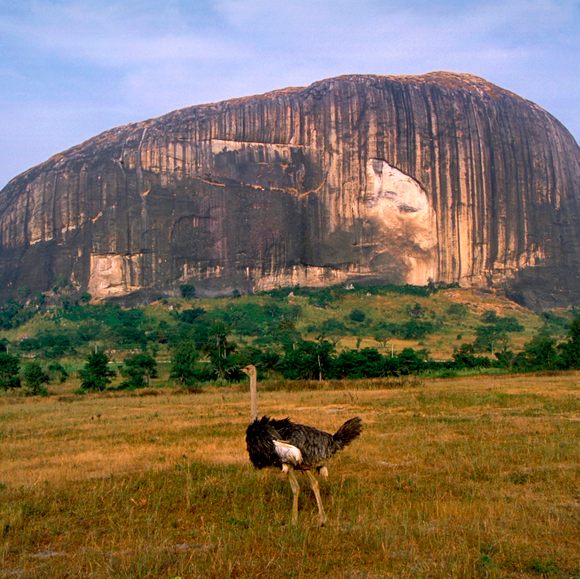Exploring Zuma Rock – standing at 725 meters A Historical Landmark in Nigeria
Zuma Rock, a substantial natural monolith formed from gabbro and granodiorite, Situated to the west of the capital, Abuja, along the main route to Kaduna near Madala, it is often referred to as the “Gateway to Abuja from Suleja.” Rising approximately 300 meters (980 feet) above its surroundings, Zuma Rock was previously believed to be in the Federal Capital Territory but is, in fact, located in the upper part of Madalla, within the Suleja Local Government Area of Niger State.
This iconic rock formation is featured on the 100 naira note and has historical significance as a defensive refuge for the Gbagyi people during intertribal wars against invading neighboring tribes. Zuma Rock’s impressive height sets it apart in the Nigerian landscape, surpassing NECOM House (Lagos’ tallest skyscraper as of 1979) and towering above the combined heights of Aso Rock and Olumo Rock.
Zuma Rock, standing at 725 meters, is a prominent landmark in Nigeria, surrounded by myths and legends. The rock’s surface naturally depicts a human face, believed by the Gwari people to represent a deity and ancestral powers governing their community. It is also considered a gateway to the afterlife, where spirits go after death.
During the rainy season, an unusual occurrence happens – the rock catches fire. This phenomenon is explained by the contact between heat and the main rock body when saturated boulders or broken pieces slide due to water, creating friction and generating fire.
Zuma Rock served as a hideout against external forces in the 15th century when the people of Zuba discovered it in a thick forest. They settled around it, considering it a powerful deity, and used it as a defense against invading tribes and external threats.
According to another myth, Zuma Rock sits atop a large expanse of underground water. If the rock were pulled down, it is believed that there would be a disastrous outburst of water, submerging a vast land area.
Some fun facts about Zuma Rock include its appearance on Nigeria’s 100 Naira currency banknote. It is twice as high as Australia’s Uluru Rock, surpassing the combined height of Nigeria’s Aso Rock and Olumo Rock and standing more than four times higher than Nigeria’s tallest building, NECOM House.

Fetish Beliefs
Nestled deep within the dense forest enveloping the rock, there thrived a village inhabited by the Koro people. The chief of this village assumed the role of both the community leader and the priest dedicated to the deity associated with a small rock within the village. This sacred site was believed to be a location for sacrificial rituals. The villagers, deeply connected to their beliefs, safeguarded the rock zealously, restricting access to outsiders. A prevailing notion persisted that no one had ever reached the base of the rock due to prevailing superstitions and the apprehension of invoking a curse. Moreover, it was widely believed that the village itself remained concealed from plain view.

In historical accounts dating back to the 1940s, the District Officer of Abuja, alongside the Sarkin Malamai and Sulaimanu Barau—who later assumed the role of the Emir of Abuja—accompanied the Chief of Zuba on a visit to the rock and the mystical village. Despite strong warnings from locals regarding potential curses and the reluctance of the priest to meet with them, the party embarked on the journey. The priest was characterized as an untidy and unclothed individual, while the villagers were reputed for making human sacrifices to appease their deity. Disregarding these cautionary tales, the group initiated their expedition by first visiting Chachi. Although the villagers from Chachi declined to lead them to the fetish village, they agreed to provide directions.
Upon reaching the village, the visitors were met with a warm reception from inhabitants who spoke fluent and ‘proper’ Hausa. To their surprise, the priest appeared no different from other men—adequately attired and groomed. Contrary to earlier descriptions, the priest denied any knowledge of human sacrifices but acknowledged the possibility of such practices in the past. He clarified that the current rituals involved animal sacrifices directed towards their ancestors and the spirits of previous priests, rather than towards the rock itself.
